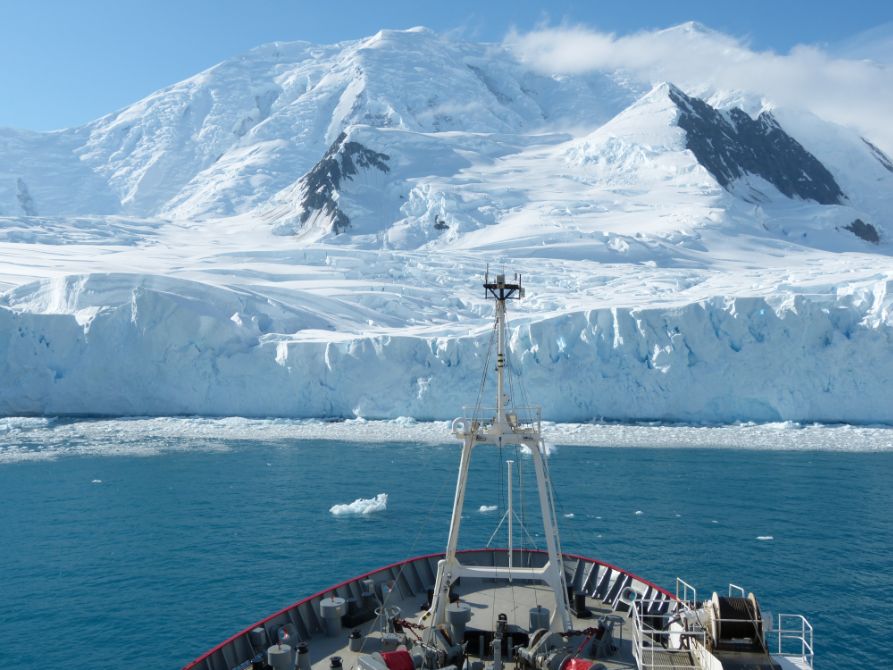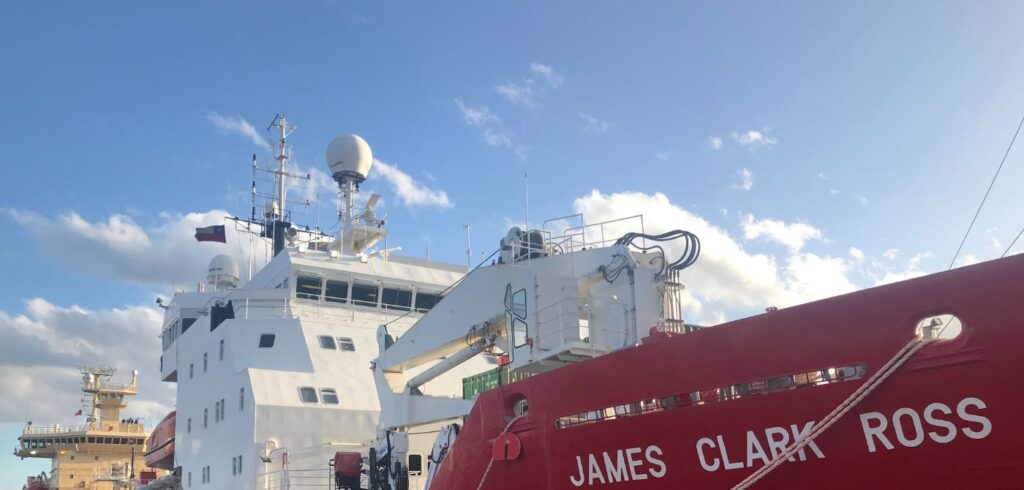Video credit: John O’Duffy @BAS
Researchers on board the British Antarctic Survey (BAS) research ship RRS James Clark Ross have observed that an underwater tsunami created by significant calving from the William Glacier resulted in vigorous ocean mixing, a process that is not currently factored into computer models.
Scientists were taking ocean measurements close to the William Glacier, situated on the Antarctic Peninsula, as the front of it dramatically disintegrated into thousands of small pieces. As well as witnessing disruptions on the ocean surface, they recorded ‘internal’ underwater tsunamis as tall as a house, a phenomenon that has been previously missed in the understanding of ocean mixing and in computer models.
The William Glacier typically has one or two large calving events per year, and the team estimated this one broke off around 78,000m2 of ice, with the front of the glacier towering 40m above sea level. Before it broke away, the water temperature was cooler at around 50-100m in depth and warmer below this. After the calving, this changed dramatically, with temperature much more even across different depths.
Internal tsunamis are an important factor in ocean mixing, which affects life in the ocean, temperatures at different depths, and how much ice the ocean can melt.

Professor Michael Meredith, head of the polar oceans team at BAS and lead author of the study, said, “This was remarkable to see, and we were lucky to be in the right place at the right time. Lots of glaciers end in the sea, and their ends regularly split off into icebergs. This can cause big waves at the surface but we know now it also creates waves inside the ocean. When they break, these internal waves cause the sea to mix and this affects life in the sea, how warm it is at different depths and how much ice it can melt.
“This is important for us to understand better. Ocean mixing influences where nutrients are in the water and that matters for ecosystems and biodiversity. We thought we knew what caused this mixing – in summer, we thought it was mainly wind and tides, but it never occurred to us that iceberg calving could cause internal tsunamis that would mix things up so substantially,” he said.
As opposed to the waves caused by wind and tides, tsunamis are caused by geophysical events where water is suddenly shifted, for example by an earthquake or landslide. Internal tsunamis have been noticed in a handful of places, caused by landslides. Until now, no one had noticed that they are happening around Antarctica, probably all the time because of the thousands of calving glaciers there. Other places with glaciers are likely affected also, including Greenland and elsewhere in the Arctic.
This chance observation and understanding is important, as glaciers are set to retreat and calve more as global warming continues. This could likely increase the number of internal tsunamis created and the mixing they cause.
This process is not factored into current computer models and changes the understanding of how the ocean around Antarctica is mixed, helping to improve knowledge about what it means for climate, the ecosystem and sea level rise.
Meredith added, “Our fortuitous timing shows how much more we need to learn about these remote environments and how they matter for our planet.”
The research cruise on RRS James Clark Ross was part of the ICEBERGS project and was funded by the Natural Environment Research Council. To view the complete study, click here.



